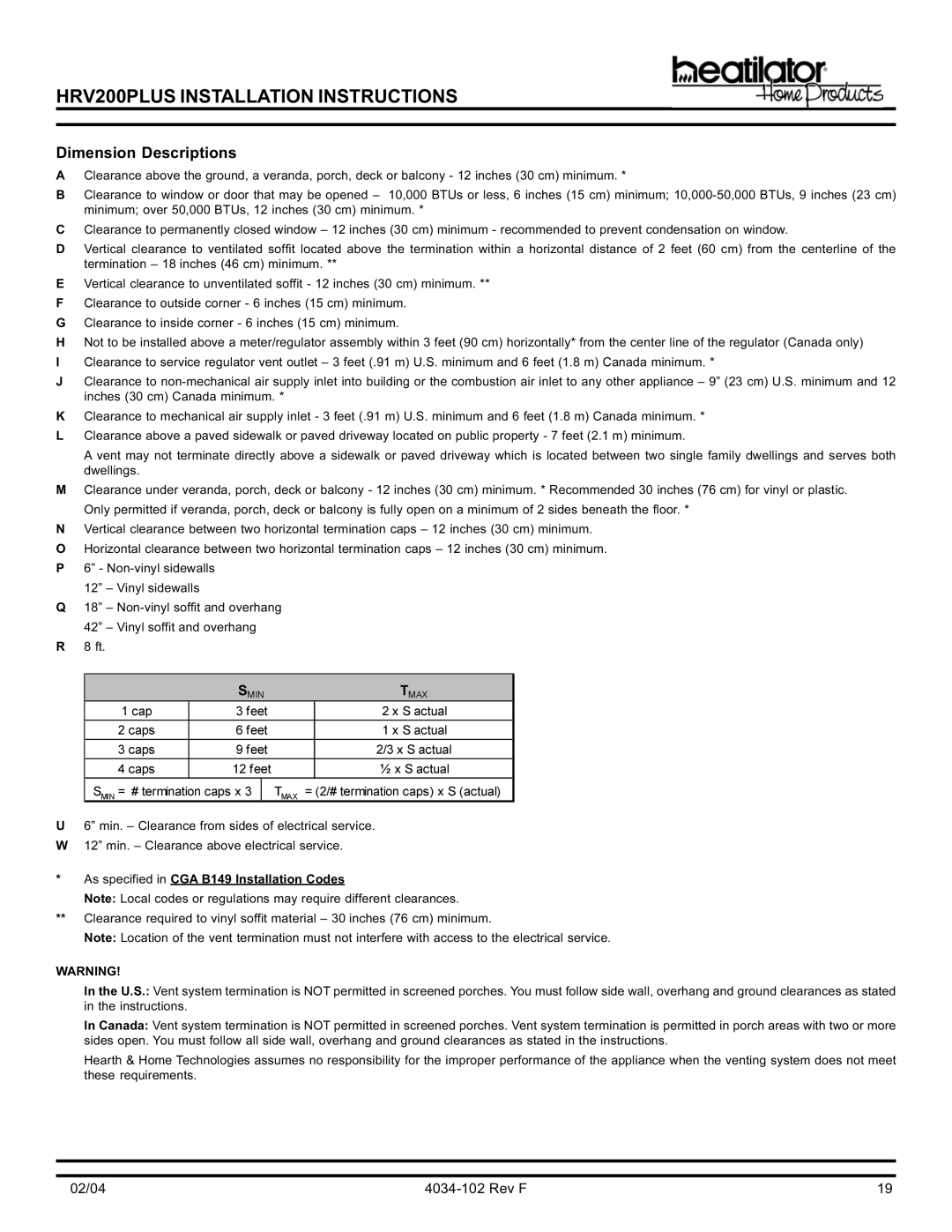HRV200PLUS specifications
The Hearth and Home Technologies HRV200PLUS is an advanced heat recovery ventilator (HRV) designed to provide optimal indoor air quality while ensuring energy efficiency. As homes become increasingly airtight due to modern construction techniques, the importance of proper ventilation grows. The HRV200PLUS addresses this need by continuously exchanging stale indoor air with fresh outdoor air, effectively maintaining a healthy living environment.One of the standout features of the HRV200PLUS is its innovative heat recovery technology. This system captures the heat from the outgoing air and transfers it to the incoming fresh air. As a result, the air being brought into the home is pre-warmed, reducing the demand on heating systems during the colder months. This energy-efficient method helps homeowners save on heating costs while maintaining comfort levels inside the home.
Another notable characteristic of the HRV200PLUS is its quiet operation. Equipped with high-performance, low-noise fans, this unit operates in silence, ensuring that occupants can enjoy a peaceful environment without the disruptive sounds often associated with ventilation systems. Additionally, the HRV200PLUS provides versatile installation options, allowing it to be easily integrated into both new and existing homes.
The unit features adjustable settings that allow users to customize airflow according to their specific needs. With multiple fan speeds, homeowners can choose the most suitable option for their daily activities, ensuring an ideal balance between indoor air quality and energy use. Furthermore, the HRV200PLUS includes a built-in filter system that captures dust, allergens, and other airborne particles, enhancing overall air quality.
Durability and ease of maintenance are also keys in the design of the HRV200PLUS. Constructed with high-quality materials, this unit is made to last, reducing the need for frequent replacements. The filters are easily accessible, making periodic maintenance straightforward, which further extends the product's lifespan.
In summary, the Hearth and Home Technologies HRV200PLUS stands out as a premium choice for homeowners seeking a reliable and efficient ventilation solution. Its combination of heat recovery technology, quiet operation, customizable settings, and easy maintenance make it an ideal option for improving indoor air quality while keeping energy costs in check. As the emphasis on healthy living spaces continues to grow, the HRV200PLUS remains a practical investment for modern homes.

